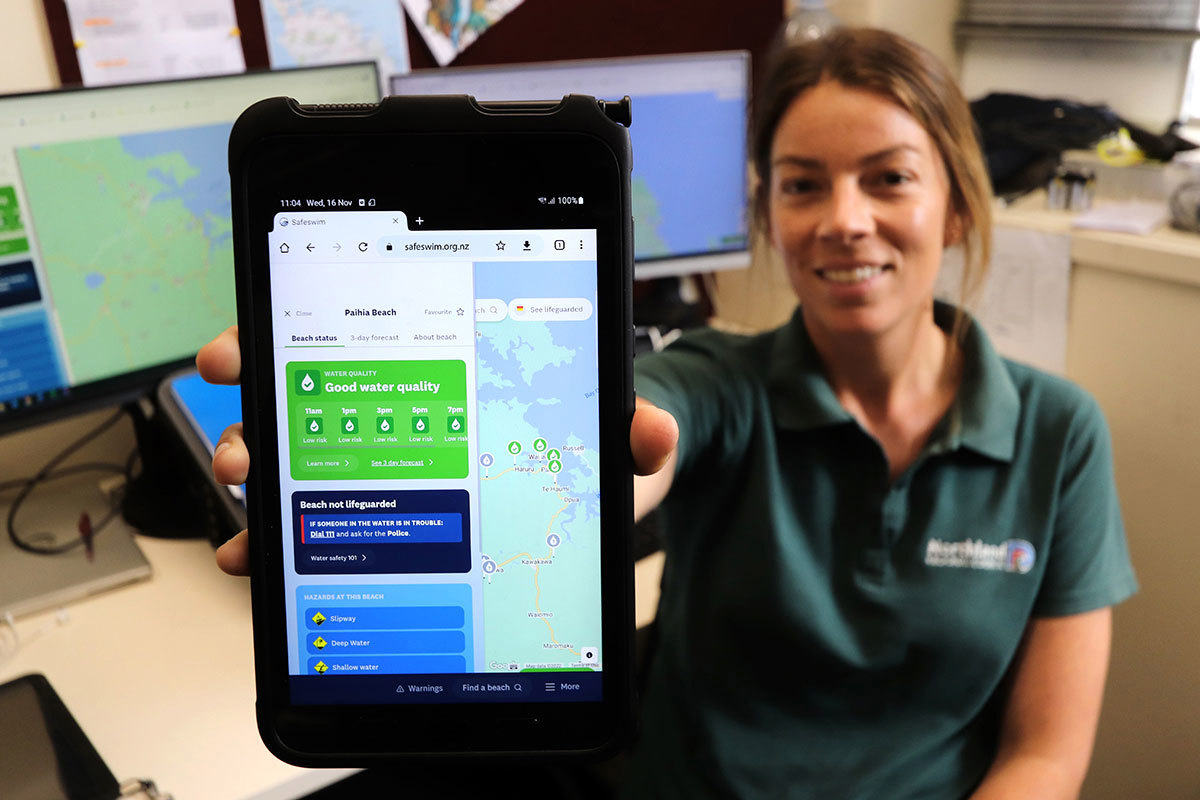Council moves water quality reporting to Safeswim platform
25 Nov 2022, 12:50 PM
The Northland Regional Council is changing the way it delivers water quality results at popular summer beach and freshwater swim spots.
Ricky Eyre, the council’s Coastal and Water Quality Field Operations Manager says for many years the council has collected weekly water quality samples at popular swim sites throughout Northland over summer. Results have been delivered to the public through various means, including online through the council website and in more recent years the LAWA website.
“As well as being very labour intensive, due to the time limitations of sample analysis, management options are always retrospective and there is no consideration of changes in environmental conditions like rainy weather which can impact water quality.”
In a bid to improve the situation, the council has been working over recent months to model recreational bathing water quality using a wealth of water quality data it has collected over the years.
The result is a system that establishes a relationship between historical results with environmental drivers (rainfall) to provide ‘real-time and near-future swimability predictions’.
Mr Eyre says the information on 50 coastal and 20 freshwater sites popular with swimmers and other recreational water users over the warmer months will be able to be presented year-round via the ‘Safeswim’ website www.safeswim.org.nz from December. The shift to Safeswim comes after six popular Northland sites were added to it in a low-key trial last summer.
Results will also be posted on the ‘Can I Swim Here?’ section on the national environmental reporting website LAWA – www.lawa.org.nz
“Among a host of potential benefits are improved knowledge of water quality at swimming sites, improving public understanding of potential health risks and providing real-time/forecasted water quality year-round.” “Safeswim also provides information on tides, physical hazards and lifeguard patrols, where appropriate, providing a ‘one-stop shop’ for users to make informed decisions on where to swim before heading off.”
Mr Eyre says despite the move to Safeswim, the regional council will continue to take water samples throughout the year to ‘ground truth’ the model and new monitoring sites will be added to the Safeswim platform over the next year.
Mr Eyre says the system uses a series of pins/droplets to illustrate the advisability of swimming and other contact with water. He says while the regional council does not have the authority to close beaches or freshwater sites to swimmers, the information is provided for users to make informed decisions.
Water quality predicted to meet national guidelines is marked with a green water droplet indicating a low risk of illness from swimming.
When water quality is predicted to exceed national guidelines, Safeswim will display a red water droplet indicating a high risk of illness from swimming.
“Essentially it means that levels of bacteria indicate that more than 1 in 50 people are likely to become ill after putting their head underwater.”
Mr Eyre says for most healthy people water that meets national guidelines will pose a minimal level of risk. “However, water below the guideline values may pose a potential health risk to high-risk user groups such as the very young, the elderly and those with impaired immune systems."
Finally a black pin on Safeswim indicates that the swimspot has been affected by a confirmed wastewater overflow and authorities ‘strongly advise’ against swimming as the risk is higher than normal.
Answers to frequently asked questions on Safeswim can be found at: www.nrc.govt.nz/swimmingfaqs

Sam Gilbert, Environmental Monitoring Officer - Water Resources for the Northland Regional Council, checks out Paihia’s water quality on the Safeswim website.
